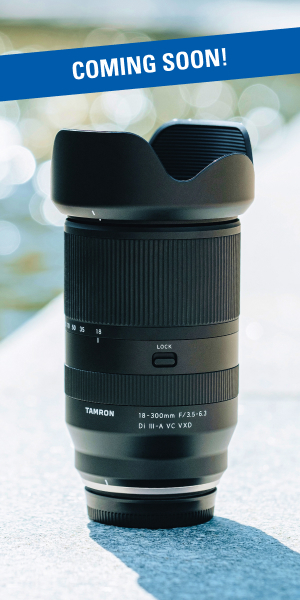If you’ve ever wondered how to photograph food in restaurants and capture dishes in their best light—fast, beautifully, and on-brand—this article is for you. As the Creative Director for Influx Marketing, specializing in hospitality marketing and commercial photography in Chicago and Miami, I’ve spent years refining my approach to on-location food photography for small and mid-sized restaurants. In this post, I’m sharing the key techniques and professional insights that help me create images that tell a story and drive engagement.
Tips and Images By Andy Aguirre
What You Will Learn in This Article:
- Restaurant food photography tips to elevate your visuals
- How to define the hero of your food photo and eliminate visual clutter
- Storytelling through food photos to reflect brand identity
- Food photography lighting techniques to create crave-worthy images
- How to use depth of field in food photography for artistic impact
- Why the Tamron 24-70mm is ideal for fast-paced food photography
From Design Frustrations to Creative Control

I got my start with creating content as a freelance graphic designer. As a designer, I would get frustrated with the images that came across my desk from clients, so I decided to pick up a camera and start learning how to create the visuals I wanted to see in my own work. Being self-taught meant years of hard work, constant practice, and dedication before I began producing the kind of restaurant food photography that captured not just food, but feeling.
Discovering My Passion for Food Photography

I initially tested the waters by shooting creative portraits for local musicians in Chicago, but it wasn’t long before I found my true calling in food, beverage, and product photography. Working with restaurants allowed me to blend my love of design with food styling in restaurants—a critical skill that turns a simple dish into an eye-catching, branded image.
My goal for every shoot is two-fold:
- Always aim to learn something new
- Try a new technique or creative focus
This mindset keeps my approach to on-location food photography fresh and adaptive, even in fast-paced food photography scenarios.
The Lens That Changed Everything: Tamron 24-70mm

For the majority of my professional photography career, I’ve shot with a Nikon D800 and my Tamron SP 24-70mm F/2.8 Di VC USD G2 (Model A032). This lens is the workhorse behind nearly all of my food photography lighting techniques and compositions. I rented it early in my career, and I knew I had to own one. Today, it’s my go-to gear for Tamron 24-70mm food photography in busy restaurant settings. It delivers crystal-clear sharpness, gorgeous color, and the flexibility I need for both wide interior shots and tight food close-ups—all in the same shoot.
Fast-Paced Shoots, Real Restaurant Environments

The majority of my photography takes place on-site at restaurants, often during open hours. These sessions demand the ability to work fast, adapt lighting, and make the most of ambient conditions. This is the heart of fast-paced food photography. I’m currently a one-man team, and I take pride in walking into a local restaurant, quickly setting up, creating a gallery of content, and leaving without disrupting operations. This kind of on-location food photography is about more than just images—it’s about helping restaurants tell their stories, build visual branding, and attract new customers.
Tips for How to Photograph Food in Restaurants
Let’s break down some of my most trusted restaurant food photography tips that will help elevate your work and bring flavor and storytelling to your shots.
TIP 1: Define the Hero of Your Image

In food styling in restaurants, the challenge often lies in balancing a busy tabletop environment. Identify the main subject—your hero dish—and eliminate distractions. Use your frame intentionally: fill it, get close, and don’t be afraid to let the dish command the viewer’s attention.
TIP 2: Don’t Just Take a Shot, Tell a Story

Storytelling through food photos is what separates snapshots from branded content. When I arrive for a shoot, I speak with the chef or manager to understand the restaurant’s personality and what inspires their menu. Then I take visual cues from the décor or plating to incorporate into the frame. These brand-aligned elements create compelling, contextual content that elevates the final image and resonates with customers.
TIP 3: Show Dimension with Lighting

Lighting is everything in food photography. My go-to food photography lighting technique is backlighting or side lighting, which adds depth and highlights texture—making dishes look more three-dimensional and delicious. I rarely use front lighting, as it tends to flatten the scene and make food look lifeless. Good lighting is what provokes appetite in a photo.
TIP 4: Select the Correct Depth of Field

Choosing the right depth of field in food photography is an art. There’s no universal f-stop that works for all dishes. Some plates require razor-sharp focus throughout, while others benefit from a shallow depth that blurs the background and draws attention to specific textures. I always ensure the hero dish is sharp, and let the aperture setting support the story I’m telling with each frame.
Mastering How to Photograph Food in Restaurants

Photographing food in restaurants is both an art and a strategic skill—especially when working in fast-paced, real-world environments with limited time and lighting control. By learning how to photograph food in restaurants using storytelling, intentional composition, and the right tools like the Tamron 24-70mm lens, you can create mouthwatering images that not only showcase a dish but also elevate a brand’s identity.
Whether you’re just starting out or looking to refine your technique, always keep your hero dish in focus, leverage lighting for depth, and tailor your approach to each unique location. With practice and creativity, you’ll build a portfolio that not only looks beautiful but connects emotionally with your audience—and keeps your restaurant clients coming back for more.
To learn more about lenses for food photography, visit the Tamron Store today.
